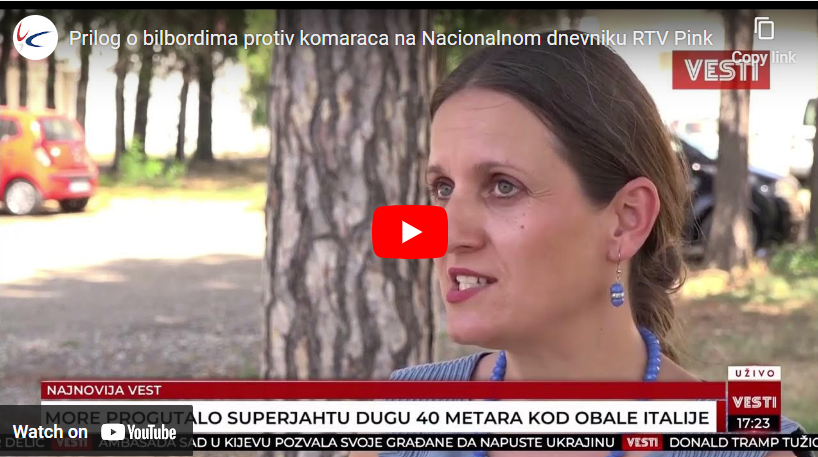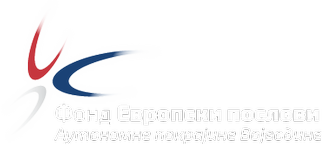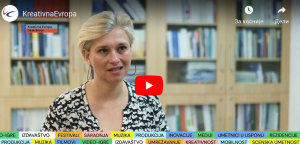Report on billboards against mosquitoes on the National Daily RTV Pink

The project Mosquito control in the cross-border area 2 (MOS-Kros 2) was financed within the Intereg IPA cross-border cooperation program between Croatia and Serbia. The total budget of the project is close to one million euros.
The leading partner is the Teaching Institute for Public Health of Osijek-Baranja County, the other partners are the Institute of Public Health Sombor, the Institute of Public Health of Požega-Slavonia County, the “European Affairs” Fund of AP Vojvodina and the Institute of Public Health of Vojvodina.
Objective: To improve public health services related to the early detection of mosquito-borne diseases by improving mosquito surveillance and control.
One of the expected results is the installation of illuminated advertisements (billboards) that will contribute to mosquito control in the territory of Zapadnobački district, Južnobački district in Serbia, Osijek-Baranja and Požeško-Slavonska Counties in Croatia, a total of 50 illuminated advertising billboards.
Billboards represent an addition to the interdisciplinary approach in mosquito control, and in this way we also educate the public about the importance of mosquito control, in which all of us as citizens should be involved, because we can contribute to mosquito control by arranging the yard and surroundings:
1. Mow and Trim! Take away the mosquitoes’ place to rest
2. Empty the water from the objects in which it is retained
3. Invert or cover containers and objects with water
4. By placing screens on doors and windows
5. Wearing long-sleeved clothes in the evening
6. Repellents
The power supply on illuminated advertising billboards in Serbia is exclusively solar, via a solar panel. Billboards attract mosquitoes in an environmentally friendly way. The info board of the illuminated advertisement contains useful information that citizens can use to educate themselves about the possibilities and ways to reduce the number of mosquitoes in their yards and surroundings.
How exactly the device works:
-Emits lactic acid and carbon dioxide and thus attracts mosquitoes.
– The fluorescent light turns on at night and improves the attraction of mosquitoes.
-Once attracted, mosquitoes become trapped inside the advertisement and eventually die of dehydration.
A WORD FROM THE WORLD HEALTH ORGANIZATION (WHO)
The WHO believes that mosquito traps in the form of light-up advertisements that attract and kill the adults are an excellent way to control Zika and other viruses. Chris Jackson, an insect control expert at the University of Southampton, told the BBC that any help with mosquito control was great and welcome.




